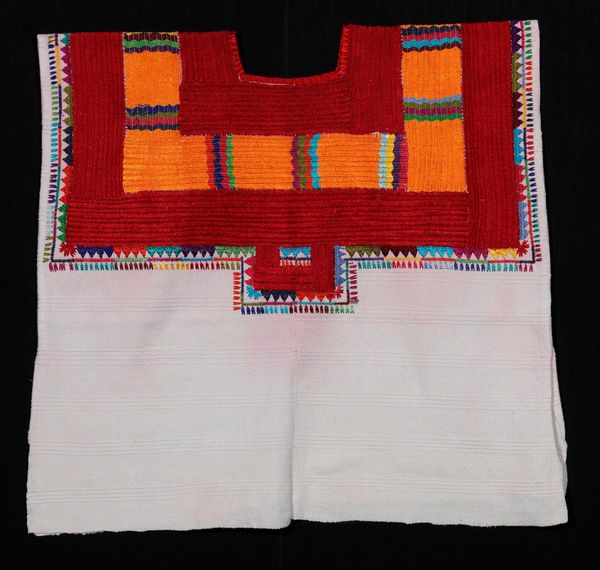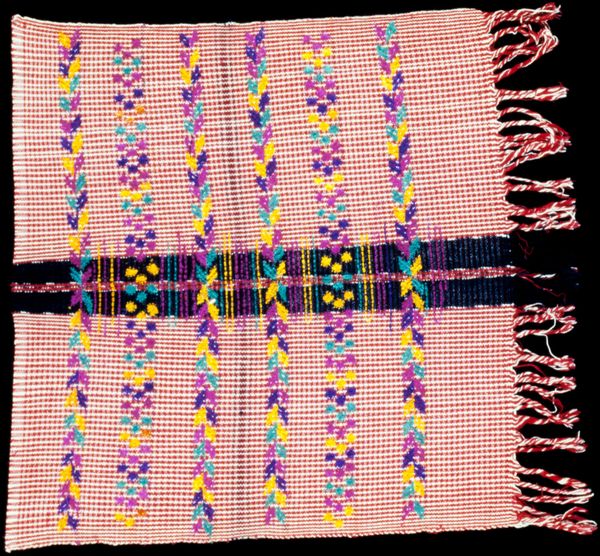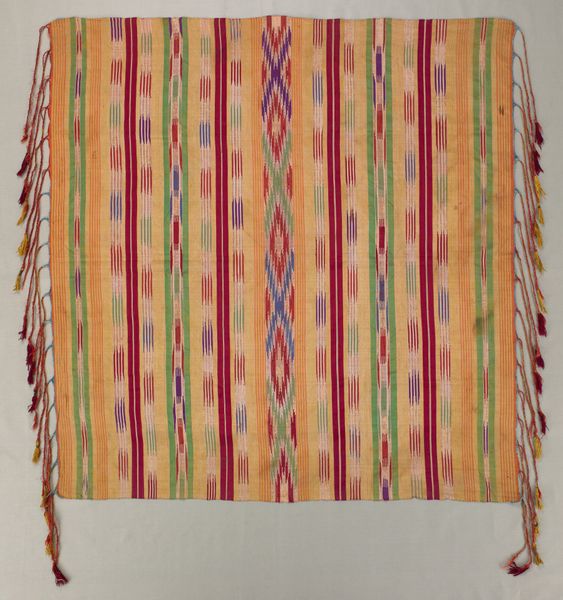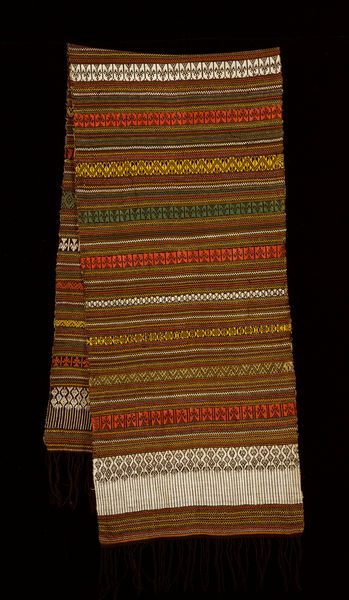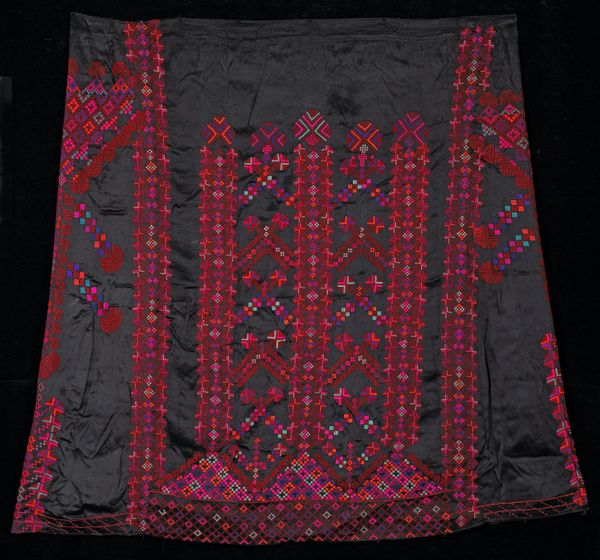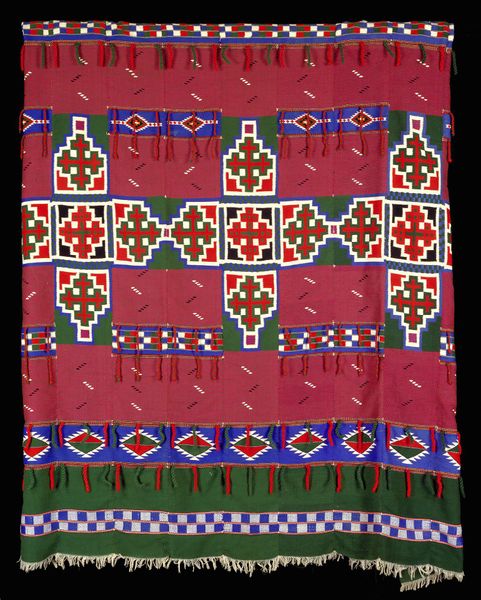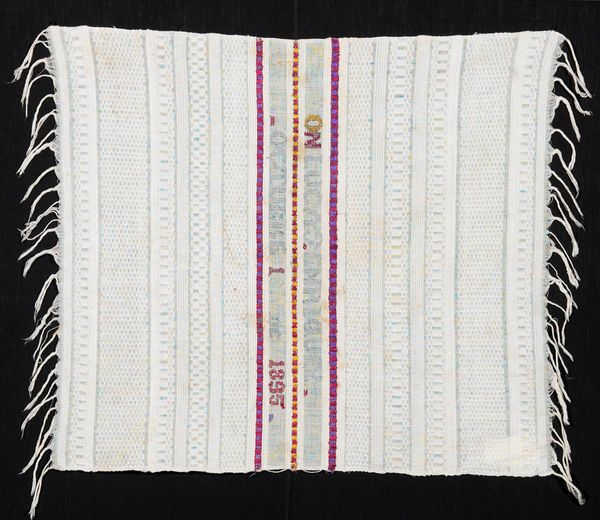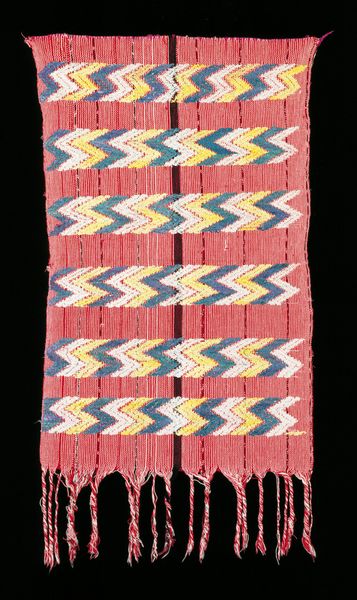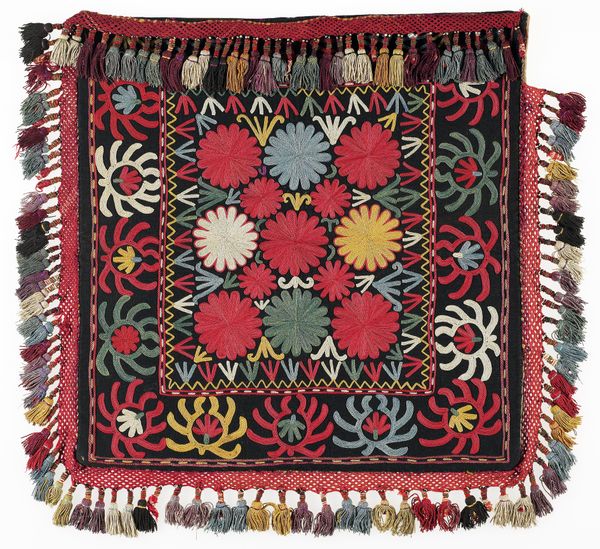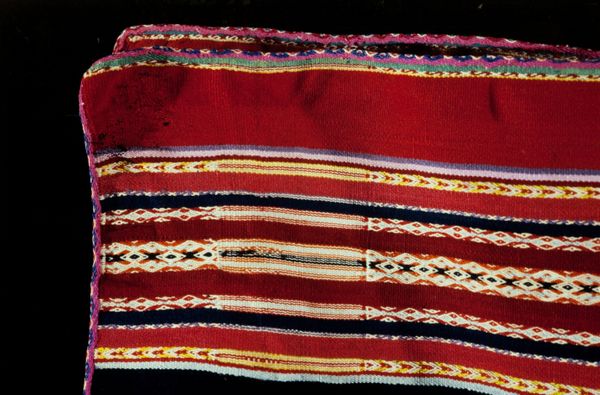
fibre-art, weaving, textile, cotton
#
fibre-art
#
weaving
#
decorative
#
textile
#
folk-art
#
geometric
#
cotton
#
textile design
#
decorative-art
#
decorative art
#
indigenous-americas
Dimensions: 44 3/16 x 36 1/4in. (112.2 x 92.1cm)
Copyright: No Known Copyright
Curator: This is a "Wedding blouse (huipil)", likely created in the 20th century. It’s part of the collection here at the Minneapolis Institute of Art. Editor: What strikes me immediately is the juxtaposition of textures! The geometric, almost rigidly patterned weaving contrasting with the soft, cloud-like fluff at the bottom. It’s wonderfully tactile, even just looking at it. Curator: Exactly. It's important to consider the process and the materials. The cotton weaving is clearly labor-intensive, each geometric shape meticulously crafted. These blouses aren't simply clothing, they are visual testaments to the maker’s skill and cultural identity. The incorporation of the feathers raises interesting questions about the means of production too—what natural resources were locally available, and how did those resources find their way into becoming part of the artwork? Editor: Right. And what about the social context of a "wedding blouse?" Garments like this play a significant role in communal identity and rites of passage. How would this huipil be displayed or presented during the ceremony? What social messages would it communicate? Its symbolism speaks to themes like prosperity, fertility, or spiritual blessing. Curator: Indeed, and the survival of weaving traditions—the continuation of this craft—becomes a subtle form of cultural resistance, an assertion of identity within shifting social landscapes. It reminds us that “folk art” isn’t some relic of the past but a constantly evolving practice. Editor: The vibrant color choices are anything but accidental. They are indicative of status and position within the community, reflecting on the social status and cultural role of the woman. Beyond the garment itself, how do these items make their way into museum collections like this? Were they commissioned? Donated? Curator: Excellent questions. The journey of this blouse from the hands of its maker to a museum case says volumes about the complexities of cultural preservation, and the power structures that influence what art gets valued. Editor: It's powerful to consider how something so personal and handmade becomes a public object, viewed and interpreted by a potentially very different audience. Curator: It makes you think about value, right? The monetary value a museum places on the work versus the personal, cultural, and material value imbued by its creator. Editor: Absolutely. This little dialogue we've had, I think it has revealed multiple layers embedded in one object. Curator: A great example of the stories textiles can tell about both the maker and their cultural landscape.
Comments
minneapolisinstituteofart about 2 years ago
⋮
While the art of individual self-decoration has become more and more prevalent in contemporary garments, Maria Sanchez de la Cruz's huipil epitomizes the collective aesthetic of the traditional Zinacantán village. Huipiles from Zinacantán are distinctive, characterized by the weavers' use of delicate, bright red and pink bands of geometric motifs contrasted with pure white fabric. The addition of feathers to this huipil further solidifies its ties to tradition, as feathers are a common design element of a local bride's wedding blouse. Zinacantán weavers are unique in that they alone continue to practice the ancient Mayan art of feather weaving. Using a technique passed down through countless generations, a bride begins working on her feathered huipil as soon as she is engaged. She is faithfully supervised by her future mother-in-law; the bride's ability to produce beautiful garments will either reflect well or poorly on the groom.
Join the conversation
Join millions of artists and users on Artera today and experience the ultimate creative platform.
